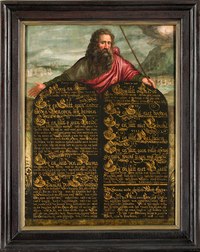
Photo from wikipedia
T.F. Torrance held the hypostatic union to be the normative instance of divine–human relationship. The structure of the relation between the divine nature and the human nature as delineated in… Click to show full abstract
T.F. Torrance held the hypostatic union to be the normative instance of divine–human relationship. The structure of the relation between the divine nature and the human nature as delineated in the hypostatic union is the archetype to which all other theological loci must correspond. This essay argues that Torrance applied this Christocentric approach to formulate his own theological realism in which God’s self-revelation through the Son and by the Spirit both shapes and is cognized by the rational structure of human understanding, preserving the distinct integrity of human cognition and divine revelation in theological knowledge. This constitutes a conscious attempt on the part of Torrance to reverse the synthesis of rational structure and material content in Immanuel Kant’s transcendental idealism.
Journal Title: Irish Theological Quarterly
Year Published: 2018
Link to full text (if available)
Share on Social Media: Sign Up to like & get
recommendations!